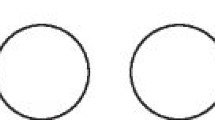Abstract
Data sources
The Cochrane Oral Health Group Trials Register was searched along with the Central Register of Controlled Trials, Medline and Embase databases. Eight dental journals were searched by hand. Bibliographies of relevant articles were checked and endodontic equipment manufacturers and authors of the identified randomised controlled trials (RCT) were contacted to identify unpublished or ongoing RCT. There was no language restriction.
Study selection
All RCT about retreatment of teeth with periapical pathosis in which both surgical and nonsurgical approaches were used and having a follow up of at least 1 year were considered for analysis.
Data extraction and synthesis
A quality assessment of the RCT included was carried out and authors were contacted for any missing information. Data was extracted in duplicate independently, with analysis conducted according to the Cochrane Oral Health Group's statistical guidelines.
Results
Three RCT were identified, two of them reporting different data from the same clinical study. The risk of bias was judged as moderate for one study and high for the other one. 126 cases were followed-up for at least 1 year, and 82 had a follow-up of 4 years. At the 1-year the success rate for surgical treatment was slightly better than for nonsurgical treatment (risk ratio, 1.13; 95% confidence interval, 0.98–1.30). At 4 years (only one RCT) the outcome for the two procedures became similar.
Conclusions
The finding that healing rates can be higher for cases treated surgically than for those treated nonsurgically, at least in the short term, is based on only two RCT. A single RCT reported that, in the medium to long term, healing rates for the two procedures are very similar.There is currently scarce evidence for a sound decision-making process regarding alternative approaches for the retreatment of a periradicular pathosis. More well-designed RCT should be performed with follow-up of at least 4 years and with a consistent sample size, to detect differences between the outcomes of the two treatments, if any exist.
Similar content being viewed by others
Commentary
Unfortunately, endodontic treatment is not always successful, and management options for residual periapical pathology include repeat endodontic therapy or surgical intervention. The authors have performed a detailed appraisal of the literature to examine differences in outcome between surgical and nonsurgical therapy for endodontic retreatment of periradicular lesions. The outcome measures considered were success at 12 months as determined by a combination of clinical and radiographic examination.
One of the two trials1 assessed outcomes at 6 months, 1, 2 and 4 years in 92 patients (95 teeth), although five of these patients were not followed up at 4 years. The study was deemed to have an adequate description of inclusion and exclusion criteria and an adequate comparison of control and treatment groups. It was also classified as having a moderate risk of bias, that is, plausible bias that raises some doubts about the results.
The second trial2 looked at outcomes at 1 year in 37 patients (37 teeth). The study had unclear inclusion and exclusion criteria, made no specific mention of control and treatment groups and had a high risk of bias (plausible bias that seriously weakens the confidence in the results).
The methodology of the review cannot be faulted and it is a clear, concise article. It could perhaps have benefited, however, from describing in more detail the methodology of the surgical and nonsurgical retreatments performed in the original studies. There was no mention of assessment of the quality of the initial endodontic treatment. The lack of this information prevents the reader from making any direct comparisons with their own clinical technique and necessitates the acquisition of the original papers in order to fully appreciate the research.
The review concluded that, on the basis of these two trials, there is, “no apparent advantage of using a surgical or non-surgical approach for the re-treatment of periapical lesions in terms of long-term outcome.” They recommended that a clinical decision between the two techniques should be based upon factors other than long-term outcome, such as the patient's presenting condition and the surgeon's skill. Further well-designed RCT are necessary.
Practice point
There is no apparent difference between surgical and nonsurgical approaches so the choice of treatment approach should be based upon the patient's initial clinical situation and preference, the operator's experience and skill, the risk of complications, and the technical feasibility and cost.
References
Kvist T, Reit C . Results of endodontic retreatment: a randomised clinical study comparing surgical and non surgical procedures. J Endodontics 1991; 25:814–817.
Danin J, Stromberg T, Forsgren H, Linder LE, Ramskold LO . Clinical management of nonhealing periradicular pathosis. Surgery versus endodontic retreatment. Oral Surg Oral Med Oral Pathol Oral Radiol Endod 1996; 82:213–217.
Author information
Authors and Affiliations
Additional information
Address for correspondence: Luisa Fernandez, Group Co-ordinator, Cochrane Oral Health Group, MANDEC, 3rd Floor Dental Hospital, University of Manchester, Higher Cambridge Street, Manchester M15 6FH, UK. E-mail: luisa.fernandez@manchester.ac.uk
Del Fabbro M, Taschieri S, Testori T, Francetti L, Weinstein RL. Surgical versus non-surgical endodontic re-treatment for periradicular lesions. Cochrane Database Syst Rev 2007; issue 3
Rights and permissions
About this article
Cite this article
Ainsworth, G. Little evidence of any difference between surgical or non-surgical approaches for retreatment of periapical lesions. Evid Based Dent 8, 101 (2007). https://doi.org/10.1038/sj.ebd.6400521
Published:
Issue Date:
DOI: https://doi.org/10.1038/sj.ebd.6400521
This article is cited by
-
The use of the erbium yttrium aluminium garnet (2,940 nm) in a laser-assisted apicectomy procedure
British Dental Journal (2008)



